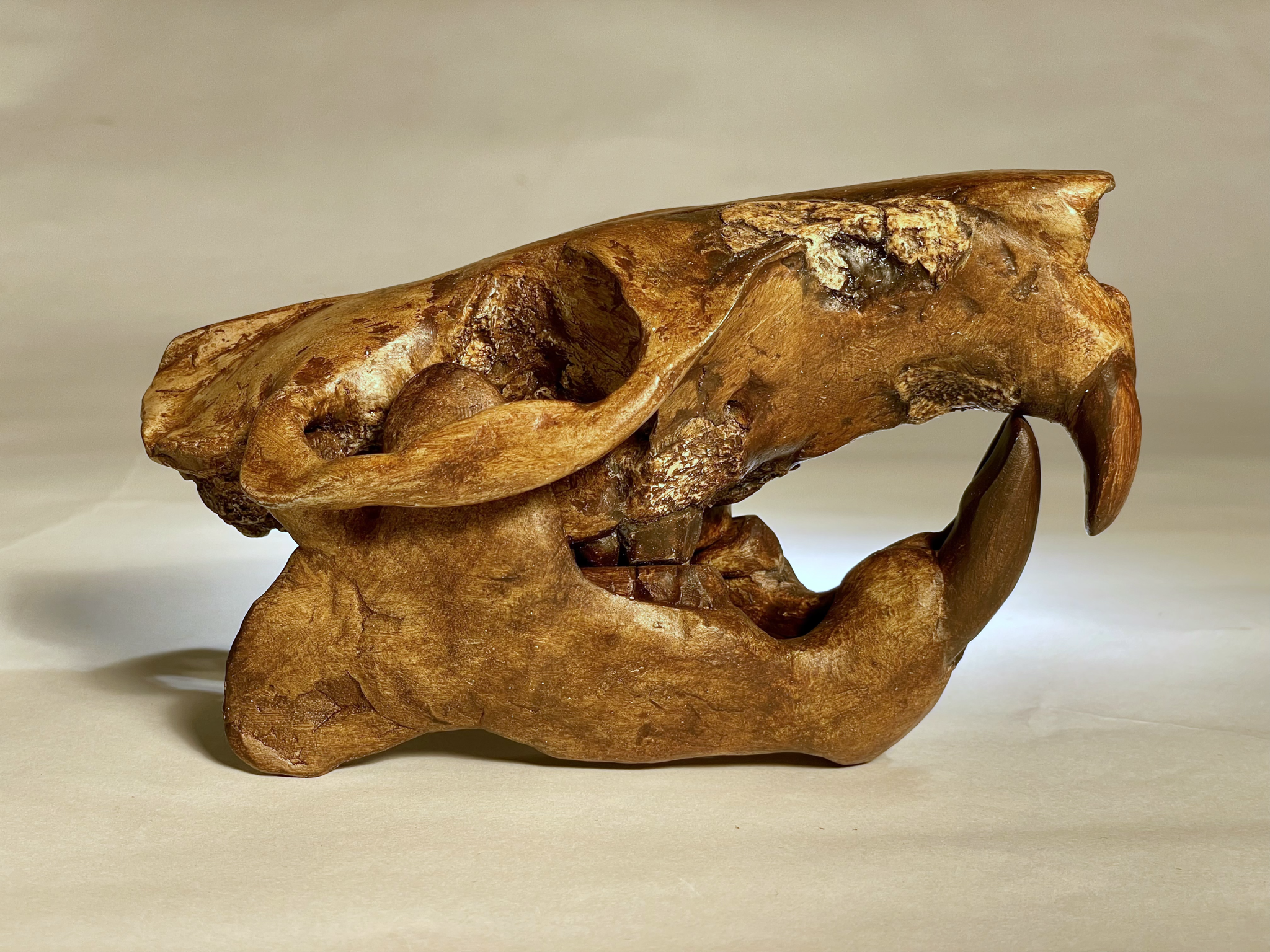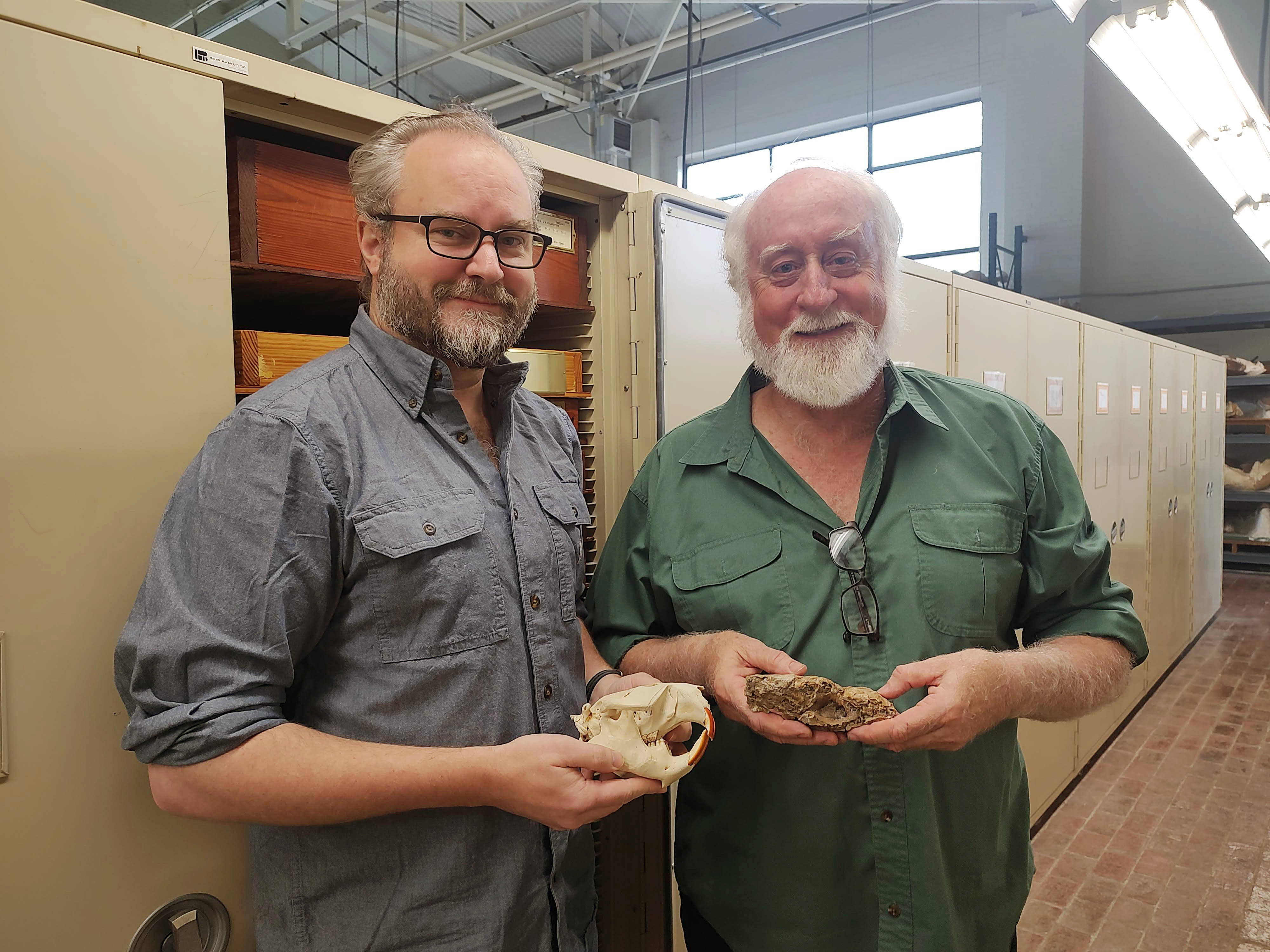
Inspiration can come from anywhere, and for Steve May, a research associate at the University of Texas’ Jackson School of Geosciences, inspiration came in the form of a Buc-ee’s billboard. For those uninitiated (or those not from Texas), Buc-ee’s is a famous chain of gas stations and travel centers with a number of world records and an iconic, red-capped beaver mascot.
 The Buc-ee’s beaver is a common sight while driving through Texas. Credit: viviandnguyen - www.flickr.com/photos/viviannguyen/7273094164/, CC BY-SA 2.0
The Buc-ee’s beaver is a common sight while driving through Texas. Credit: viviandnguyen - www.flickr.com/photos/viviannguyen/7273094164/, CC BY-SA 2.0
You see, May had been working on old material in the Texas Vertebrate Paleontology Collections and had started studying some fossil beaver specimens that would turn out to be a new species. The billboard featured an ever-chipper Buc-ee the Beaver and the phrase “This is beaver country.”
May thought to himself “that's right, and it has been beaver country for 22 million years.” And thus, the new species was dubbed Anchitheriomys buceei in a new paper recently published in Palaeontologia Electronica.
 A partial skull fossil of the ancient beaver Anchitheriomys buceei (right) alongside a skull reconstruction (left). Credit: UT Austin / Jackson School of Geosciences / Matthew Brown.Anchitheriomys buceei lived in the mid-Miocene, around 15 million years ago. It is now known from localities near Huntsville and Burkeville, Texas. These localities are from the lower and middle part of a series of primarily non-marine sedimentary rocks known as the Fleming Group, with outcrops generally limited to small exposures along creeks and in roadcuts. However, all the specimens studied here were not collected by May or any of his colleagues; they were collected nearly a century ago.
A partial skull fossil of the ancient beaver Anchitheriomys buceei (right) alongside a skull reconstruction (left). Credit: UT Austin / Jackson School of Geosciences / Matthew Brown.Anchitheriomys buceei lived in the mid-Miocene, around 15 million years ago. It is now known from localities near Huntsville and Burkeville, Texas. These localities are from the lower and middle part of a series of primarily non-marine sedimentary rocks known as the Fleming Group, with outcrops generally limited to small exposures along creeks and in roadcuts. However, all the specimens studied here were not collected by May or any of his colleagues; they were collected nearly a century ago.
May had finished another large project on the Lapara Creek Fauna and was looking through the collections for more fossil mammals from the Miocene of the Texas Coastal Plain. “I was just opening drawers and looking at specimens when I noticed a partial skull” May recalls. The specimen had caught his attention because, as well as preserving bone, it was also an endocast, essentially a rock replica made when sediment filled the inside of the skull where soft tissue (such as the brain) would have been.
 Steven May (right) and Matthew Brown (left) with beaver skulls new and old in the vertebrate paleontology collections at the Jackson School of Geosciences. May, a research associate, holds a skull from Anchitheriomys buceei, a new species of ancient beaver that he discovered in the collections. Brown, the director of the collections, holds a skull from a modern North American Beaver. Credit: UT Austin / Jackson School of Geosciences.
Steven May (right) and Matthew Brown (left) with beaver skulls new and old in the vertebrate paleontology collections at the Jackson School of Geosciences. May, a research associate, holds a skull from Anchitheriomys buceei, a new species of ancient beaver that he discovered in the collections. Brown, the director of the collections, holds a skull from a modern North American Beaver. Credit: UT Austin / Jackson School of Geosciences.
Before becoming a part of the University of Texas’ fossil collections, this skull and many other specimens were once housed in a museum at Texas A&M. A fellow by the name of Dr. Mark Francis was a famous veterinarian at Texas A&M and was also an avid paleontologist. He led many collection expeditions through the late 19th and early 20th centuries, filling the museums collections.
In 1938, Texas A&M hired a paleontologist, C. J. Hesse, to be the curator for their museum and these collections. Hesse was part of the team that collected the fossil beaver skull in 1941, and archival data, including notes from Hesse himself, made it clear that he thought the fossil represented a new species. Unfortunately, Hesse passed away in 1945 before he could complete and publish the study.
Sadly, the museum at Texas A&M was also demolished in 1972, and in 1983, the collection was formally transferred to the University of Texas at Austin. The specimens would sit there for four more decades until May and co-author Matthew Brown, the director of the Jackson School’s vertebrate paleontology collections, would stumble upon and study these hidden gems.
Using modern technologies like high-resolution CT scanning, they could Illuminate the fine features of the fossils, continuing and adding new detail to Hesse’s work, while further demonstrating that Texas is indeed, Beaver Country.
Founder and CEO of Buc-ee’s, Arch “Beaver” Aplin III, heard of the new ancient beaver and realised that perhaps Buc-ee’s has more history in Texas than he once thought. “Buc-ee’s was founded in 1982, but we may need to rethink our beginnings”.
This study is titled ‘Anchitheriomys buceei (Rodentia, Castoridae) from the Miocene of Texas and a review of the Miocene beavers from the Texas Coastal Plain, USA’ and was authored by Steven R. May (Jackson School Museum of Earth History, The University of Texas at Austin) and Matthew R. Brown (Jackson School Museum of Earth History, The University of Texas at Austin).
To discover more about this research, you can read the full publication here.

